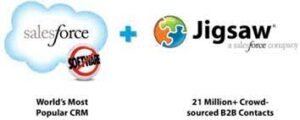The Nuclear Power Revival: How Big Tech is Fueling AI with Small Modular Reactors
From Meltdowns to Megawatts: Nuclear’s Second Act
Following two catastrophic nuclear accidents—Three Mile Island (1979) and Chernobyl (1986)—public trust in atomic energy plummeted. But today, an unlikely force is driving its resurgence: artificial intelligence.
As generative AI explodes in demand, tech giants face an unprecedented energy crisis. Data centers, already consuming 2-3% of U.S. electricity, could devour 9% by 2030 (Electric Power Research Institute). With aging power grids struggling to keep up, cloud providers are taking matters into their own hands—by turning to small modular reactors (SMRs).
Why AI Needs Nuclear Power
The Energy Crisis No One Saw Coming
- AI compute clusters demand staggering power—Elon Musk’s 100,000-Nvidia GPU setup alone draws 100MW (enough for a small city).
- Goldman Sachs predicts data center power consumption will surge 160% by 2030.
- Traditional renewables (solar, wind) can’t match AI’s 24/7 baseload requirements.
Enter Small Modular Reactors (SMRs)
- Smaller & safer than traditional plants (one-third the size).
- Modular design allows incremental expansion.
- Carbon-neutral—critical for tech’s sustainability pledges.
- More reliable than weather-dependent renewables.
The global SMR market for data centers is projected to hit 8M by 2033, growing at 48.72% annually (Research and Markets).
The Big Four Tech Players Going Nuclear
1. Microsoft: Reviving Three Mile Island
- Partnered with Constellation Energy to restart Pennsylvania’s infamous reactor.
- $1.6B investment, aiming for 2028 relaunch.
- Signed 20-year power purchase agreement.
2. Google: Betting on Next-Gen SMRs
- Teamed with Kairos Power for 7 reactors by 2035.
- Expected output: 500MW across multiple sites.
3. Amazon: Three-Pronged Nuclear Push
- $650M data campus near Susquehanna nuclear plant (pending regulatory approval).
- Exploring SMRs with Dominion Energy (Virginia).
- Partnering with X-Energy for Washington-based reactors.
4. Oracle: Plans Under Wraps
- Considering three SMRs for future data centers.
- Locations and timelines remain undisclosed.
The Startups Building Tomorrow’s Nuclear Tech
| Company | Backer/Notable Feature | Innovation |
|---|---|---|
| Oklo | Sam Altman (OpenAI) | Rural SMRs targeting 2027 launch |
| TerraPower | Bill Gates | Sodium-cooled fast reactors |
| NuScale | First U.S.-approved SMR design | Factory-built, modular light-water reactors |
| Last Energy | 80+ microreactors planned in Europe/Texas | 20MW units for data centers |
| Deep Atomic | Swiss startup | MK60 reactor with dedicated cooling power |
| Valar Atomics | “Gigasite” assembly lines | On-site SMR production |
| Newcleo | Lead-cooled fast reactors | Higher safety via liquid metal cooling |
Challenges Ahead
- Regulatory hurdles: Nuclear approvals move slower than AI innovation.
- Public perception: Overcoming post-Chernobyl stigma.
- Cost: Only deep-pocketed tech giants can afford early adoption.
The Bottom Line
As AI’s hunger for power grows exponentially, Big Tech is bypassing traditional utilities to build its own nuclear future. While risks remain, SMRs offer a scalable, clean solution—potentially rewriting energy economics in the AI era.
The race is on: Whoever cracks reliable, scalable atomic power first could gain an insurmountable edge in the AI arms race.













